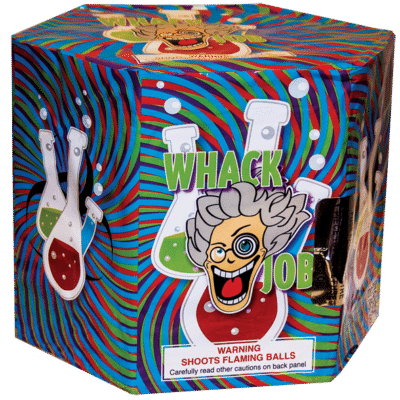Somewhere in China, around 200 BC, some unknown person happened to throw green bamboo into a fire. Superheated air pockets inside the bamboo caused crackling, popping, and an eventual explosion. The Chinese believed that the intense noise could be used to ward off evil spirits.
However, it wasn’t until the 9th century AD that the precursor to black powder, huo yao (the fire drug) was invented. By the 1400s, Chinese fireworks were popular in Italy, and Renaissance artisans developed the first true artistic fireworks. Today’s fireworks are more sophisticated, but the basics behind their creation remain the same. Here is a brief look at how fireworks are made.
 Shells and Stars
Shells and Stars
The basic building block of any firework is its shell. No longer husks of hollow green bamboo, today’s fireworks shells are rather bland cylinders of cardboard and heavy paper. Inside the shell are the stars—the pieces that determine exactly what the firework will look like when it explodes. Stars range in form from doughy balls to tightly pressed clay pieces that resemble batteries.
The particular effect that a firework generates is based on the size, shape, and arrangement of the stars. Larger stars burn longer and have more overall material available to burn, so they spew out further into the sky and remain lit for longer before disappearing. Pressed stars have more mass than round ball stars, creating the broader strokes and lingering frayed edges that are hallmarks of palm tree fireworks effects. The pattern in which the stars are arranged inside the shell is the pattern in which they will explode, such as a star shape or a smiley face.
Chemical Components
Of course, fireworks shells contain specific components that are designed to trigger precise chemical reactions in just the right order. Oxidizers, reducing agents, and a fuel source are necessary for the shell to launch and explode. Different fireworks manufacturers use different carefully-guarded recipes, but the basic process is the same for all fireworks.
When the firework is lit, an initial lift charge is detonated, propelling the firework into the air and simultaneously lighting a time-delayed fuse. A rapid series of chemical reactions occurs, such that when the firework reaches the top of the arc created by the lift charge, it explodes, releasing the pellet stars in a shower of carefully crafted effects.
Color Considerations
Fireworks get their colors from different metals and metal salts embedded within the pellet stars. As the shell heats up prior to explosion, the energy excites the electrons within. After detonation, the excess energy is emitted as light.
The size of the gap between the ground state and the excited state is different for each metal and metal salt. This difference causes each metal or metal salt to emit light at a different wavelength, which our eyes interpret as different colors.
All manufacturers have their own proprietary formulations, and some color combinations are quite elaborate. As a general rule of thumb, however, white and silver fireworks often use beryllium, aluminum, magnesium, or titanium. Paler reds generally contain lithium carbonate, while strontium carbonate causes a more intense red. Sodium compounds are often responsible for yellow fireworks, while gold fireworks usually contain iron, charcoal, or lampblack. Copper chloride creates a vibrant blue, and can be mixed with strontium carbonate (fiery red) to make purple. Orange fireworks are often based on calcium chloride.
Special Effects Magic
Of course, many of today’s fireworks create multiple elaborate effects within each shell. Again, the trade secrets are not easily retrieved, but science helps us identify the basic techniques. We know that the arrangement of the stars within the shell determines the pattern that the firework will provide, so it stands to reason that careful hand-arrangement can produce some very elaborate effects.
In addition, many of today’s shells are known as multi-breaks. This means that when the larger external shell bursts open, numerous smaller shells are propelled across the sky. Each then bursts open on its own schedule, creating its own individual effects. Variations of this multi-break technique can be used for everything from intricately woven effects to deafening and seemingly endless finales.
At Dynamite Fireworks, we don’t only sell top-quality, name-brand fireworks. We also provide the information you need to know to use them responsibly, legally, and safely. If you have any questions or concerns, give us a call at (219) 937-4090. We look forward to becoming your one-stop shop for all your fireworks needs!

